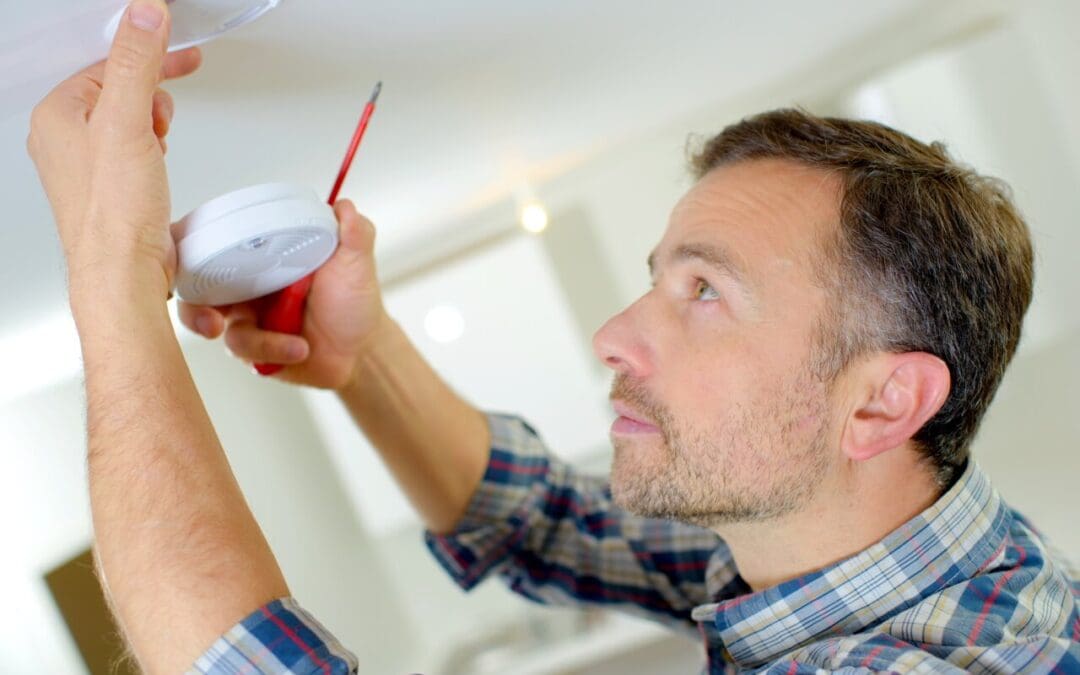Your home is your sanctuary, where you should feel safe and secure. Achieving that sense of peace requires more than locking the front door; it means proactively implementing key safety essentials that protect your family and property from everyday hazards. A comprehensive approach, from fire prevention to mitigating invisible threats, guarantees your house is a safe retreat.
Fire Safety Essentials: Don’t Miss the Alarms
Fire remains one of the greatest dangers in any home. Fortunately, the safety essentials for fire prevention are straightforward and effective. The most basic, yet critical, step is installing and maintaining smoke alarms. Guarantee you have working alarms on every level of your home, inside every sleeping area, and outside each separate sleeping area. Test them monthly and replace the batteries twice a year (the easiest way to remember is to do it when you change your clocks for daylight saving time). If your alarms are over ten years old, replace the entire unit. For enhanced security, consider interconnected alarms, so if one sounds, they all sound.
Beyond alarms, keep potential fire sources in check. Never leave cooking unattended. Clean lint filters in your dryer after every use, as clogged filters are a leading cause of house fires. Store flammable liquids and materials away from heat sources, and inspect electrical cords regularly for fraying or damage. Finally, every household member should know two escape routes from every room and have a designated meeting place outside.
Invisible Threat Safety Essentials
Not all threats are visible. Carbon monoxide (CO) and radon are two odorless, colorless gases that demand your attention. Carbon monoxide, produced by faulty furnaces, stoves, or water heaters, is deadly. Installing carbon monoxide detectors is a core safety essential. Like smoke alarms, place these on every level of your home, and test them regularly. Never run a generator, charcoal grill, or any gas-powered engine inside your garage or home. Radon, a naturally occurring radioactive gas, is a long-term health hazard. Every homeowner should have radon testing to measure levels in the house. If levels are high, mitigation systems are highly effective at reducing the concentration, turning an invisible danger into a non-issue.
Leaks, Shocks, and Plugs: Water and Electrical Safety
Water leaks and electrical failures could cause significant property damage and pose risk to occupants. For water safety, routinely check under sinks and around appliances for small leaks or dampness. Even a slow drip could lead to mold and structural damage over time. Know where your main water shut-off valve is located and ensure it’s functional so you can quickly stop the flow of water during a pipe burst emergency.
When it comes to electricity, avoid overloading outlets. Never run extension cords under rugs or furniture, as this could damage the insulation and create a fire hazard. If you have children, install tamper-resistant outlets or use safety caps. If an appliance plug or an outlet feels hot to the touch, or if your circuit breakers trip frequently, call a licensed electrician immediately. These are signs of serious electrical issues. By addressing these practical steps, you maintain a safer, more secure home environment.
AmeriSpec Inspection Services offers home inspections in Southwest Ohio and Northern Kentucky. Contact us to schedule your appointment today.

